China’s careful new focus on Latin America
Just a few years ago, China was going all-in in Latin America, making huge investments in the region. Yet instability in Venezuela and a new government in Ecuador have exposed Beijing to greater risk. While China is still deepening ties, it has slowed down and changed tack, focusing only on investments that are a crucial strategic interest.
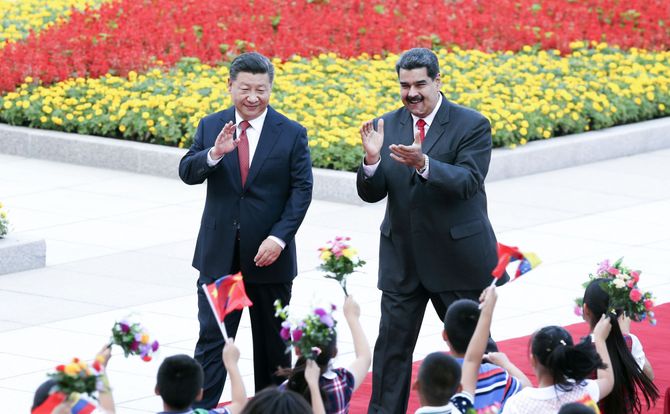
In a nutshell
- Changes in Venezuela and Ecuador have put Chinese investments at risk
- Beijing is reducing its sovereign debt exposure in the region
- It is still heavily investing in strategic industries, especially lithium extraction
Latin America’s shifting geopolitics and the prolonged decline in China’s economic growth have led to a significant change in Beijing’s strategic approach to the region. The commodities boom at the beginning of this century coincided with a period of dramatic economic expansion in China. At the time, China seemed to buy everything, invest in everything and welcome its new role as the principal geopolitical alternative to the United States for many countries in the hemisphere. Over the past year, however, China has adopted a more conservative approach to its role in the region.
It has reduced its exposure in Venezuela and Ecuador, where it had accumulated significant shares of both countries’ sovereign debt in exchange for promises of petroleum at below-market prices. It has hit the pause button on several major infrastructure projects linked to its Belt and Road Initiative and has reduced its financing of private corporations, particularly in manufacturing. Most significantly, it has focused its investment on very specific strategic industries, such as lithium extraction and renewable energy.
While China’s financial activity in the region over the past year has shrunk compared to the previous decade, it continues to see Latin America as an area where it must protect long-term strategic interests and where it can project power.
China’s relationship with Latin America continued to deepen, but at a slower pace.
Overall, China’s relationship with Latin America continued to deepen during 2018, although at a pace slower than in previous years and with two significant shifts: in Venezuela concerning sovereign debt, and in Argentina, where it expanded its presence in lithium mining. China may be touting its role in the region less than it once did, but it continues to nurture the raw materials sources it needs for development and is building its stake in activities it considers crucial to its long-term interests.
Trade
China remains South America’s top export market and is second only to the U.S. as an export destination for Latin America and the Caribbean region. While the trade balance varies widely across countries, exports were mostly boosted by modest increases in the four principal commodities traded between Latin America and China: petroleum, soybeans, iron and copper. Prices for these commodities remain below their 2014 peak but have recovered from their lowest levels. There was a boost to Brazil’s soybean exports during the tariff dispute between the U.S. and China in the middle of 2018. Brazilian soybean sales also benefited from the severe drought that reduced the Argentine harvest by nearly a third. The U.S.-China trade dispute led to a significant increase in investment (by China and by other countries) in Paraguay’s rapidly expanding soybean production. While the bilateral tension between the U.S. and China has dissipated, Beijing will be careful to protect its long-term interests by buying soybeans from alternative suppliers, such as Argentina, Brazil and now Paraguay.
China has become Cuba’s most important trading partner after Washington imposed more sanctions on the regime in Havana. China currently accounts for 30 percent of Cuba’s foreign trade. Despite Cuban efforts to attract more investment, the Chinese appear spooked by Cuba’s dual currency system and have not been able to figure out how to guarantee the value of their investments.
Facts & figures
Rising tide of trade
Latin America and Caribbean (LAC) trade balance with China, 1998-2018
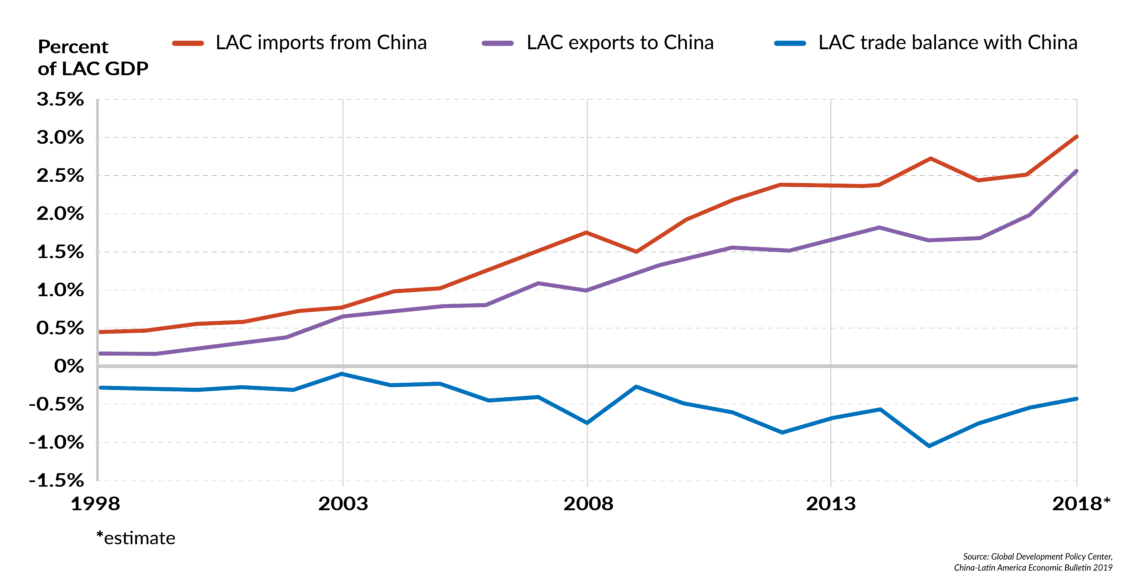
China’s trade with Latin America remains focused on mining industries: it accounts for 26 percent of the region’s extractive exports. That compares with China’s 16 percent share of the region’s agricultural exports and only 3 percent of exported manufactured goods. These figures have all increased by at least a factor of five over the past two decades. To look at these same numbers from a different perspective, extractive commodities accounted for over half of the region’s exports to China.
Over the past two decades, China’s demand has accounted for most of Latin America’s growth in the production of the four key commodities. Economists and government officials in the region are sensitive to this pattern and there is a growing awareness of what is called the “new dependence” on China. For the moment, only Ecuador has acted to reduce this dependence.
Investment
Chinese investment in Latin America declined in 2018 after a robust 2017. The most significant acquisition was Tianqi Lithium’s purchase of Canadian firm Nutrien’s 24 percent stake in Chilean chemicals and mining company SQM. That was complemented later in the year by a smaller investment in an Argentine lithium development, again through the acquisition of a Canadian mining company’s stake.
Chinese firms made major moves in energy production.
Chinese firms also made major moves in energy production: A state-owned Chinese consortium bought Peru’s Chaglla hydroelectric plant from scandal-plagued Brazilian construction firm Odebrecht, while State Grid Corporation of China completed its purchase of CPFL Energias Renovaveis, a Brazilian energy company. There also were several modest increases in Chinese foreign direct investment (FDI) in various countries throughout the hemisphere.
Sovereign debt
When it comes to sovereign debt, the Chinese have recently shown caution. Although total Chinese financing to Latin American governments in 2018 increased slightly compared to 2017, it still was lower than in any other year since 2012. Moreover, $5 billion of the $7.7 billion annual total was an advance to the Venezuelan government in an attempt to protect China’s huge exposure to that country’s sovereign debt. Although the Chinese have been accused of lending to weak states in Latin America at usurious rates or using extortion against petroleum exporting countries such as Ecuador and Venezuela, there is little evidence that either country could have secured better treatment from any other lender. Ecuador has since moved to reduce its dependence on China, while the Venezuelan situation looks like a clinch, with the creditor just as trapped as the debtor.
Facts & figures
Slowing the flow
Chinese financing to LAC governments, 2009-2018 by sector
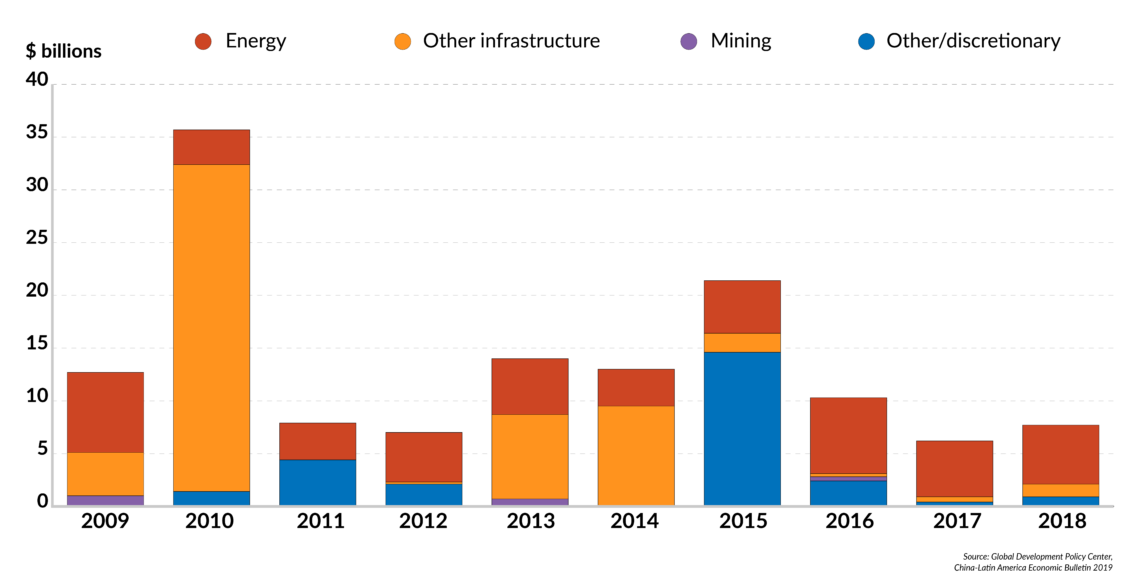
Finally, it is worth noting that Chinese efforts to win support from countries in Latin America for the Belt and Road Initiative (BRI) and the Asian Infrastructure Investment Bank (AIIB) continue to deepen. Both gained new involvement from countries in the region.
Facts & figures
Multilateral agreements
Connections to the Asian Infrastructure Investment Bank (AIIB) and Belt and Road Initiative (BRI) in Latin America and the Caribbean
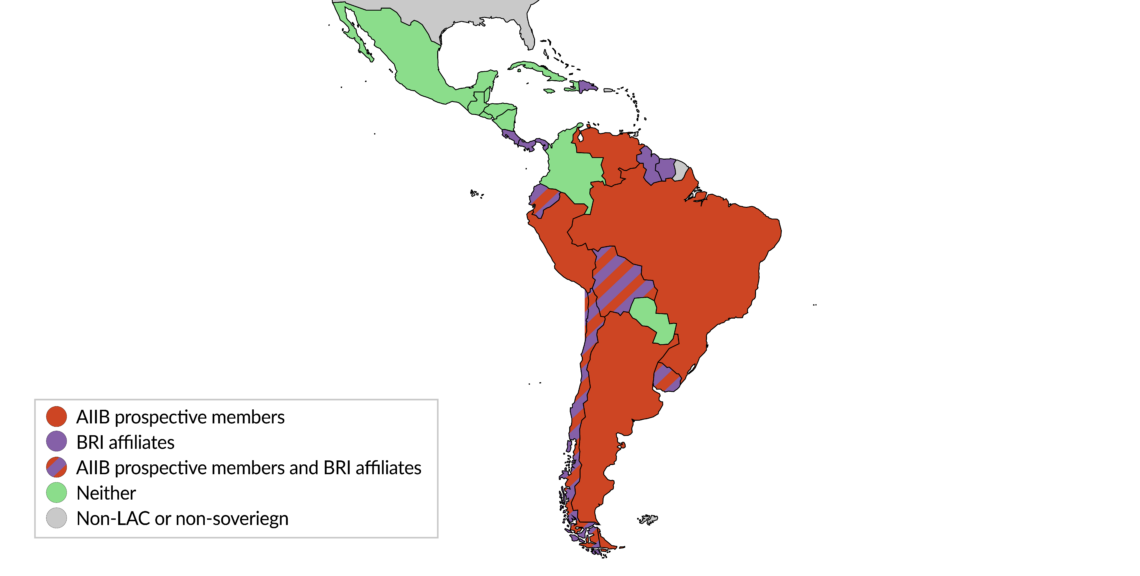
Two cases help illustrate the complexity and long-term nature of China’s policy toward Latin America. First, there is Venezuela’s slow, agonizing collapse. Over the first decade of this century, China had built up a major position in Venezuelan sovereign debt, to the point where it has become the government’s largest creditor. The Chinese were guaranteed payment through promises of petroleum at favorable prices. Over the past few years, however, gross mismanagement by the government of President Nicolas Maduro has undermined national petroleum company PDVSA’s production capacity to the point where production in 2018 was one-third of what it was some 25 years ago.
Given PDVSA’s commitments to deliver oil to Russia, the U.S., India and other buyers, China can no longer be confident that its debt will be paid at all – in oil or otherwise. The bankrupt Venezuelan government owes China $20 billion, according to estimates by the country’s commerce ministry. China has refused to extend the grace period on the debt it is owed and advanced President Maduro $5 billion to keep his government going for a few months.
At the same time, the Chinese are establishing ties to the opposition pretender to Venezuela’s presidency, Juan Guaido, the president of the National Assembly who has declared himself interim president. The U.S. and 53 other countries have recognized Mr. Guaido as Venezuela’s rightful leader.
China’s approach appears to have gotten its banks and investors into serious trouble.
Traditionally, China has not made its investments or loans conditional on political stances or macroeconomic policies. Its position has contrasted sharply with that of multinational agencies, which put numerous fiscal and budgetary conditions on the loans they offer, and the U.S., which frequently pushes for political changes. In Venezuela, China’s approach appears to have gotten its banks and investors into serious trouble. In Ecuador, it also created problems when the government changed and accused previous officials of taking bribes from the Chinese for infrastructure deals. Those projects are now on hold while the current government carries out investigations.
Lithium
Another factor that indicates Beijing remains focused on its long-term strategic goals in Latin America is Chinese investments in the lithium deposits found in the vast salt flats of the “Lithium Triangle.” The region extends from northwestern Argentina to northeastern Chile and into southwestern Bolivia. In February, Tibet Summit Resources, a Chinese company, purchased a Canadian mining company’s holding in Potasio y Litio de Argentina S.A. (PLASA) which had a concession in the Diablillos area to the northwest of the city of Salta, the capital of the eponymous province.
Meanwhile, the Chinese Export-Import Bank is financing Latin America’s largest solar field in Jujuy, just to the north of Salta, in the Cauchari field. The goal is to install 1.2 million solar panels there, making it one of the largest solar plants in the world.
Facts & figures
South America's Lithium Triangle
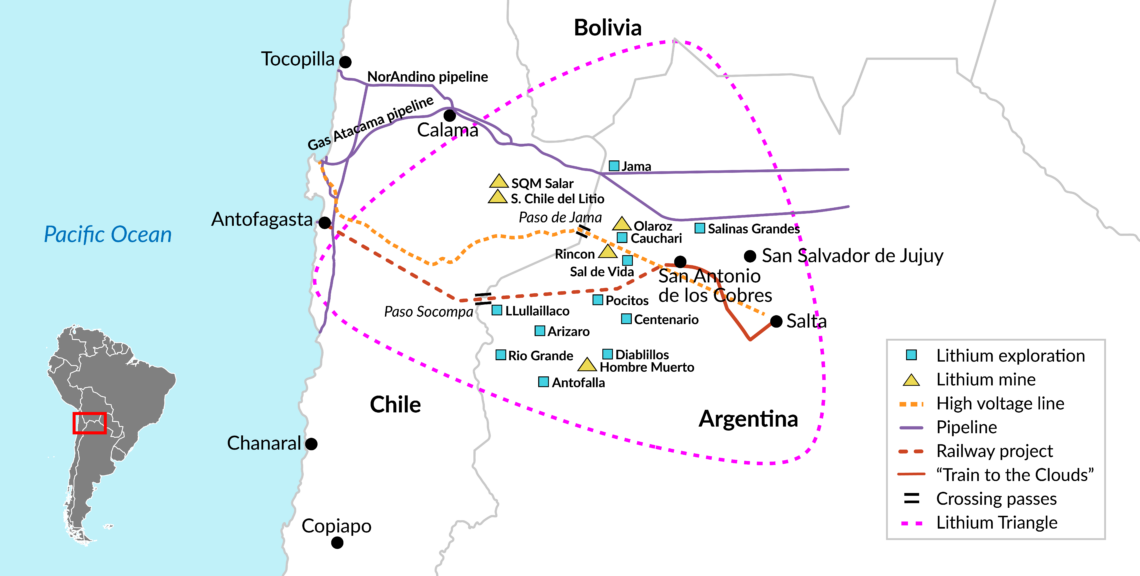
It is no accident that the solar plant overlaps with Chinese investment in the lithium fields. China’s presence in one area enhances its influence in the other. Its lithium strategy in South America is extremely aggressive, as evidenced by Tianqi Lithium’s previously mentioned purchase of a stake in the Chilean firm SQM, which produces significant quantities of the mineral. For decades, China has considered control of the global lithium market a strategic goal. It used its ability to sway the market as a weapon against Japan just 20 years ago, when it was the principal supplier of the metal to the Japanese electronics industry. While the countries were bickering over the Senkaku/Diaoyu Islands in the East China Sea, China blocked exports of lithium to Japan for more than three months, closing the Japanese producers for that period. There is no reason to believe that Beijing would not use its leverage again, if necessary.
Scenarios
The most likely scenario is that China will continue the more cautious strategy toward involvement in Latin America that it adopted in 2018. As long as commodity prices continue to recover from their recent lows, the major producers will be only too happy to maintain close relations with their principal market, China. At the same time, one can expect strategic investments in smaller countries from some of the semiofficial Chinese lenders. Recent examples include funding for projects in the Dominican Republic and Costa Rica.
In a less likely scenario, the tariff dispute between China and the U.S. would flare up again in the coming months, causing Beijing to lower its profile in Latin America to avoid worsening its relations with Washington. In the short term, this will not bother any of the commodity producers in Latin America, several of which are likely to benefit from U.S.-China tensions.








